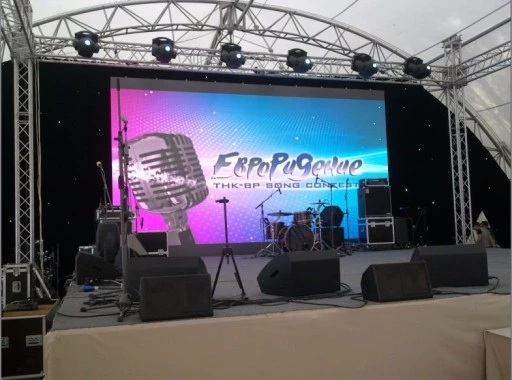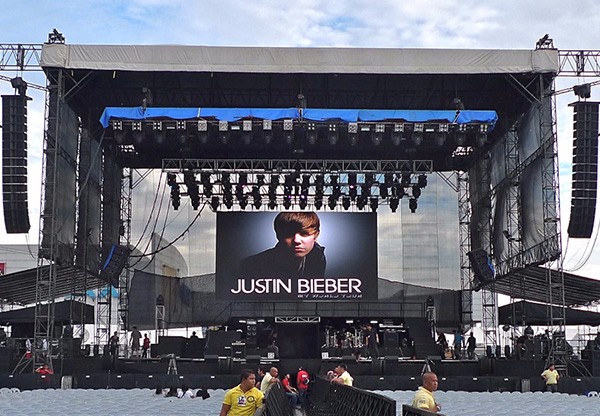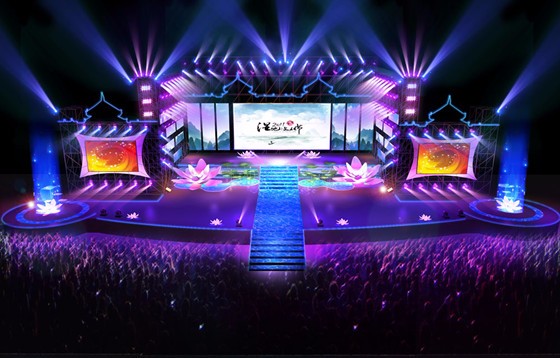Nowadays, LED displays have entered thousands of households and are widely used in more and more occasions and activities. Therefore, the corresponding LED display rental is also increasingly favored by event organizers. Whether it is outdoors or indoors, LED displays can be seen. Among them, indoor LED displays are relatively small in size and designed for stores and enterprises with large display windows, as well as organizations that want to achieve certain display goals. Compared to fixed LED displays, rental LED displays are more convenient and practical, and can save a large amount of money spent on directly purchasing LED displays. Do you know the advantages of indoor rental LED screens compared to fixed LED displays?
#Muenled
#IndoorrentalLEDdisplay
All posts tagged: Rental LED screen
The hardest part of starting up is starting out

Indoor rental LED display screens and fixed LED display screens advantage

Common design forms of rental LED screens for concerts
LED rental screens, as event backdrops, combine dynamic and stunning background visuals with a variety of interactive features. This integration enhances viewership rates and the effectiveness of program broadcasts, leaving audiences amazed. Therefore, a good concert LED rental screen not only provides viewers with a great visual experience but also adds charm to the overall theme of the stage. So, do you know what are the common design forms of LED screens for concert stages?
#Muenled
#rentalLEDscreens

How to ensure the safe use of rental LED screens?
Rental LED screens, as the name suggests, are rental LED screens that mainly exist in the form of rentals. They can be widely used in stage rentals, dance events, various press conferences, exhibitions, stadiums, theaters, auditoriums and other places. However, in addition to good actors and equipment, a good stage performance also requires the safe use of rental LED screens. After all, the use of rental stage screens not only affects the stage performance, but also the personal safety of the performers. So how do we ensure the safe use of rental LED screens?
#MuenLED
#rentalLEDscreens

What are the characteristics of Rental LED Display screens?
In the realm of visual technology, Rental LED display have emerged as versatile solutions for events, exhibitions, concerts, and more. But what exactly is a Rental LED display? Let’s explore this dynamic and in-demand technology.
#Nuenled
#RentalLEDdisplay

Application Guide for Stage Rental LED Display Screen
With the development of LED technology, LED full-color display has already broken the traditional form. From the first large-area screen, the form of main screen and side screen appeared, and then gradually developed into the innovation of panoramic video wall and creative display, and then to the new manifestation of VR/AR, 3D, holographic projection and other black technologies.
Nowadays, in stage performances, a large LED display screen is often installed as the background wall and playback screen, which is indispensable in stage performances. Today’s stage screens are basically using stage led screens. This LED display has many advantages and is cheap, so it is widely used.
#Muenled
#RentalLEDDisplay

What are the options for rental LED stage screens?
With the continuous development of performance forms such as music, performing arts and dance, LED stage rental screen, as an important part of modern stage technology, has been widely used in various performance activities, such as concerts, concerts, dance performances, dramas and so on. Free gift concert LED display screen. In these activities, LED stage rental screens can not only provide high-definition and high-brightness picture display, but also bring more colorful visual effects to the audience through multi-screen splicing and flexible combination.
#Muenled
#rentalLEDstagescreens
#rentalLEDscreens

The choice of stage Rental LED screens.
In large-scale performances, ceremonial parties, star concerts and event sites, we can often see various stage rental displays on the scene. So what is a stage rental LED display? How to better choose the products that suit you when choosing a stage rental LED display? Today, I will reveal it to you!
#Muenled
#RentalLEDscreens
#RentalLEDdisplay
In depth guide for Rental LED Display
If you didn’t know about a rental LED display before, or only know a little bit about rental LED displays, then by reading this article, you will have a comprehensive understanding. In this article, we will show you all aspects of this stage LED display from “what”, “why” and “how”. Now, let’s start this journey together!
#Muenled
#rentalLEDdisplay

Introduction to LED Display Board and Rental LED Display Screen
In the ever-evolving advanced scene, LED Display Boards and Rental LED Displays have risen as fundamental instruments for promoting, occasions, and communication. Their flexibility, dynamic visuals, and cutting-edge innovation make them vital for businesses and occasion organizers alike. This comprehensive direct investigates everything you require to know almost LED display boards and rental LED displays, their applications, focal points, and key considerations.
#Muenled
#leddisplay
#RentalLEDdisplay

The ultimate guide to LED Display Board and rental LED displays
In the ever-evolving advanced scene, LED display boards and rental LED displays have risen as fundamental instruments for promoting, occasions, and communication. Their flexibility, dynamic visuals, and cutting-edge innovation make them vital for businesses and occasion organizers alike. This comprehensive direct investigates everything you require to know almost LED display boards and rental LED displays, their applications, focal points, and key considerations.
#Muenled
#LEDdisplays
#rentalLEDdisplays